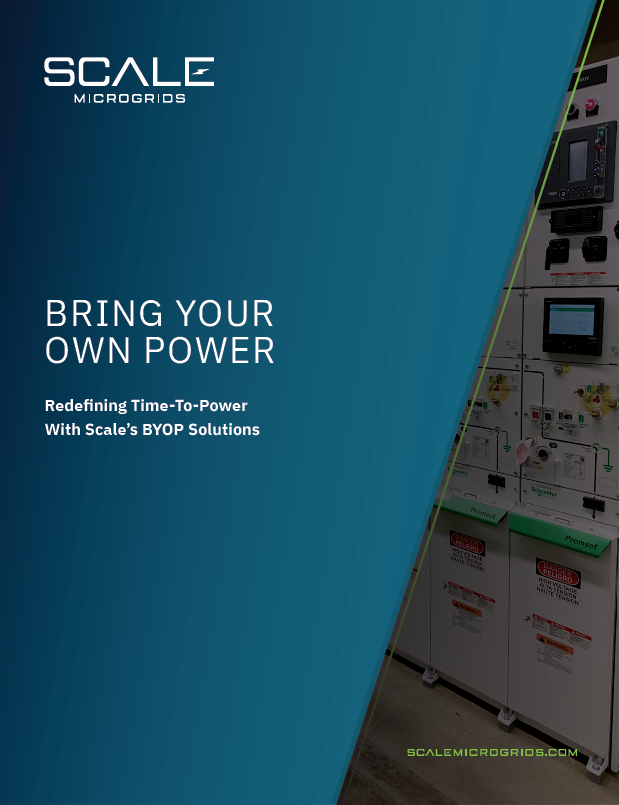
POWER YOUR GROWTH
WITH A MICROGRID.
Scale’s microgrid solutions meet your energy needs by providing cost savings, resilience against outages, reduced emissions, and increased power supply – all for $0 down.
Turn energy challenges into competitive advantages.
Our team designs, builds, owns, and operates microgrids that use advanced controls to optimize on-site distributed energy resources (DERs) and deliver results for your organization.

Significantly reduce your electricity costs and guard against rate hikes.

Reduce emisions to meet sustainability goals for you and your customers.

Ensure your critical operations stay online during utility grid outages.

Scale manages everything from design to financing to operations.
What is a microgrid?
A microgrid is a layer of integrated on-site electricity infrastructure that works in tandem with existing utility service to deliver enhanced performance. By using advanced microgrid controls to optimize operations, microgrids provide everyday cost savings and emissions benefits as well as resilience during grid outages.
How it works
During everyday operations, the microgrid operates alongside the utility grid, with advanced controls optimizing the use of energy from each resource to minimize energy costs. In the event of a grid outage, these controls enable facilities to automatically isolate (or “island”) from the grid and rely on the microgrid to keep critical operations running.

Stronger than the sum of its parts.

Hedge against rising utility costs and accelerate toward emissions reduction goals by generating clean, renewable energy on site.

Dynamically store and dispatch energy to save on everyday electricity costs and provide hours of backup power.

Ensure your facility stays powered through extended outages with backup generation.

Set your fleet up for success by creating more certainty, simplicity, and cost savings in the electrification process.

Optimize resource dispatch and ensure resilience with controls that automatically island from the grid during outages.

Remote monitoring allows our team to easily detect and diagnose issues from a single user-friendly interface.

Financing Turns a Capital Expense into Operational Savings.
Scale finances projects via Microgrid Service Agreements (MSAs), eliminating upfront costs and providing immediate savings. Similar to Energy Service Agreements (ESAs) and Power Purchase Agreements (PPAs), we charge a flat fee for energy services and system maintenance. Our microgrids offer broader benefits than standard solar or energy efficiency projects due to integrated DERs, advanced controls, and expert optimization.

Operations & Maintenance
Under our MSA financing model, Scale is responsible for the operations and maintenance of your system over the entire project lifetime. Our team provides services including:


Bring Your Own Power
Scale’s "Bring Your Own Power" (BYOP) offerings provide a solution to multi-year utility capacity delays, with microgrids that provide ultra-reliable power for sites that currently lack a grid connection or need more power at their existing grid-tied facility. As detailed in this white paper, we have a proven track record of delivering generator-based prime power solutions as well as advanced, multi-resource microgrids that also incorporate solar and storage.
No matter your industry, you depend on reliable, affordable power.
Microgrids can provide cheaper, cleaner, and more reliable power to a wide range of industries and organizations - including, but not limited, to the following examples.
































Giving you the
power to grow.
Our team is ready to help you take charge of your energy with solutions designed to meet your needs.
